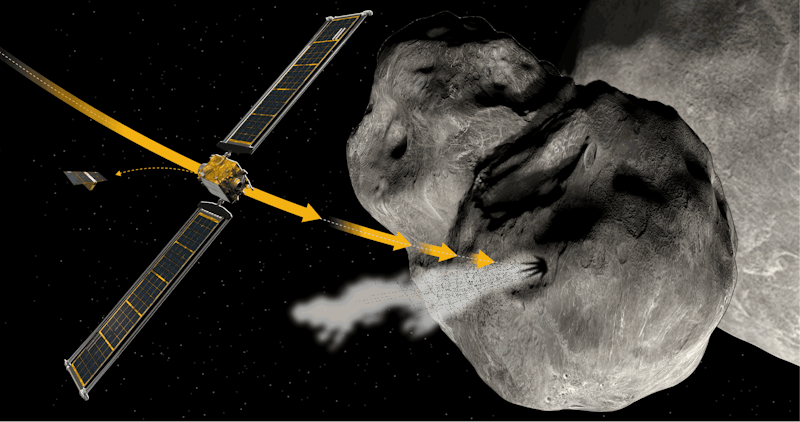Home again with Covid, with my wife (recovered) and son (never sick) about to head off for a planned Adirondack trip, my thoughts turned to the complexities of assessing risks and grasping reality. Unlike during our previous viral bout, in the summer of 2022, Covid testing options are no longer ubiquitous, with the self-administered rapid kits often out-of-stock. I chalk this up to low demand, with organizational requirements for testing mostly gone, and people often not wanting to know if they’ve got Covid, though the kits’ reliability is also an issue; a negative result, in retrospect likely false, had us thinking early symptoms were summer flu, later reading that’s an unlikely thing.
I’d used last year’s Covid hiatus to watch a wide range of movies, from the feel-good to the grim, but this time, other than the execrable Wonderwell, I’ve foregone films, holding off on my top viewing priority, Oppenheimer, till I’m ready to go to a theater. Instead, I’ve kept up with the political news, and science and tech topics.
Some space news, not much noticed, adds new perspective about NASA’s DART (Double Asteroid Redirection Test), which I wrote about with enthusiasm after its launch in late-2021. The spacecraft, as planned, impacted asteroid Dimorphos in late-2022, slightly altering that body’s orbit around asteroid Didymos; a double asteroid was chosen to avoid any prospect the target might be knocked onto an uncertain path that, conceivably, could bring it into collision with Earth. The mission was a success, demonstrating a rudimentary capacity to divert a potential killer-object, but there’s a catch: a new study shows a swarm of boulders around Dimorphos, which likely were shaken off by the collision.
As far as I know, those boulders pose little threat to Earth, but the fact they’re there, and that the possible formation of such a swarm wasn’t noted in NASA’s messaging at the outset, suggests that unintended consequences should be given greater notice in any future experimentation with—or emergency deployment of—asteroid-deflection technology. As with anti-Covid measures, asteroid-defense will involve trade-offs and uncertainties, and the authorities risk losing public confidence when their statements leave something out (as with early CDC guidance that the public didn’t need Covid masks, rather than acknowledging the priority of preserving supplies for health-care workers).
The last time I had Covid, my minor self-imposed solitude also got me thinking about extremes of human isolation. I did research into ADX Florence, the federal supermax prison in Colorado, and wrote an article speculating about the possibility Donald Trump might be imprisoned there. That venue, however, struck me, and still does, as an unlikely destination for the former president. Though I’ve now upgraded the likelihood that Trump will see the inside of a prison cell, and rank this higher than his chances of returning to the Oval Office, I still think it’s likely the Bureau of Prisons would avoid the politically-inflammatory option of placing him in a 7-by-12-foot isolation cell at ADX Florence, opting instead for some other institution in the federal system or possibly home-confinement. If Trump is convicted by state prosecutors, similar considerations are likely to apply to a resulting incarceration.
The spate of indictments of Trump and his associates, including the Georgia indictment of 19 defendants on charges that include racketeering, raises intriguing questions about the risks that the purported activities posed to American democratic institutions, and about the personal risks the alleged perpetrators may have taken upon themselves. That state legislators and party officials would undertake to be “fake electors” on behalf of Trump offers a disquieting glimpse into the degree to which party affiliation or ideological radicalization could warp the judgment of people whose experience with political institutions and aversion to going to prison might’ve been expected to provide guardrails. At the same time, the scope of such activity across multiple states and new evidence of its planning prior to the election suggest that the fake-elector effort had some chance of succeeding, which also helps explain individuals’ willingness to participate in it. A major benefit of current prosecutions is to reduce the risk of such a conspiracy happening again.
Threatening judges and other officials is another avenue rife with peril for criminal defendants, who should take caution from the case of Joseph Romano, federal inmate 72247-053, currently 60 and serving a life sentence in ADX Florence. In 2012, Romano, of Long Island, was sentenced to 15 years in prison for fraud involving the telemarketing of coins. From prison, he sought to arrange the murders of the federal judge and prosecutor of his case, paying a putative hitman who in fact was an undercover cop. This resulted in a life sentence, initially served at the federal penitentiary in Marion, IL. From there, he attempted to hire a hitman to kill the undercover cop, resulting in his transfer to ADX Florence, where he was placed under Special Administrative Measures (SAMs) that cut off virtually any communication with the outside world.
—Kenneth Silber is author of In DeWitt’s Footsteps: Seeing History on the Erie Canal, and posts at Post.News.

